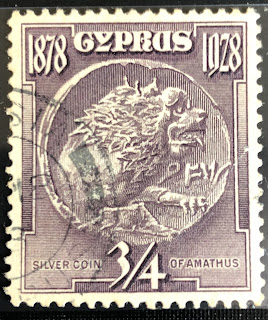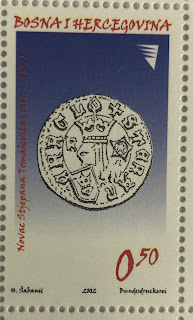I did Owls for the previous O-post, and here we are with Owls again - how could I not post owls again with such a cover in hand?! :D
Will leave you guessing whose fault it is (though if you are a regular here, I am pretty sure that would be one easy guess :))
Few weeks ago I went bird-watching in our city park here but being it was a daytime activity, no owls were spotted of course but it was really cool nevertheless. And I do hope to have the chance to join one of those nocturnal expeditions and hang out with some owls as well :)
And back to the stamps now...on the right you can see the set of stamps issued on 26 August 1978, under the name Wildlife Conservation, featuring four different owls:
- The great grey owl (Strix nebulosa) is a very large owl, documented as the world's largest species of owl by length. It is distributed across the Northern Hemisphere, and it is the only species in the genus Strix found in both Eastern and Western Hemispheres. In some areas it is also called Phantom of the North, cinereous owl, spectral owl, Lapland owl, spruce owl, bearded owl, and sooty owl.
- The northern saw-whet owl (Aegolius acadicus) is a small owl native to North America.
Weighing from 54 to 151 g, with an average of around 80 g, they are one of the smallest owls in North America.
- The barred owl (Strix varia), also known as northern barred owl or hoot owl, is a true owl native to eastern North America but they have expanded their range to the west coast of the United States and Canada, where they are considered invasive. Mature forests are their preferred habitat, but they are also found in open woodland areas.
- The great horned owl (Bubo virginianus), also known as the tiger owl or the hoot owl, is a large owl native to the Americas. It is an extremely adaptable bird with a vast range and is the most widely distributed true owl in the Americas.
Its primary diet is rabbits and hares, rats and mice and voles, although it freely hunts any animal it can overtake, including rodents and other small mammals, larger mid-sized mammals, birds, reptiles, amphibians, and invertebrates
You know, I never imagine owls as birds which actually feed on anything bigger than a worm, let alone a rabbit...
From what I could see, for all these four owls, the conservation status falls into the Least Concerned category, which is very good.
Now, on the left side, you can also see another owl stamp, this one coming from the 2001 issue,
Nature of America, which itself is stunning! The owl featured here is the burrowing owl (Athene cunicularia) which is a small, long-legged owl found throughout open landscapes of North and South America.
Unlike most owls, burrowing owls are often active during the day, although they tend to avoid the midday heat.
And even though is not an owl, I do have to mention the Old Glory stamp from 1994, which is another O for today - this flag stamp was issued in a set of 6, with a variety of the letter G - the red “G” on the stamp indicates it was printed by Stamp Venturers.
The United States Postal Service started selling the G rate stamps on December 13, 1994. This series was produced by more printers and in formats than any previous rate change stamps.
The reason this Non-Denominated booklet stamp was issued because of a postal rate change that was scheduled to take effect on January 1, 1995 - I guess the US residents would be more familiar with this than me.
Now last but not least, what makes this cover so special, is the cancellation - this cover was posted in Owl's Head - a small town in Maine, with a population of 1580. I just guess the person cancelling it was feeling kinda anxious at the moment and cancelled this left and right :D But way better than just crossing it out with a pen - that one makes my teeth cringe!
I have one or two more treats of this kind, so just keep on following the Sunday Stamps and will share them with you when the time comes :)
In the meantime, check out today's edition of Sunday Stamps!
I rarely do scheduled posts, so hopefully this one will come out just right :)





















































